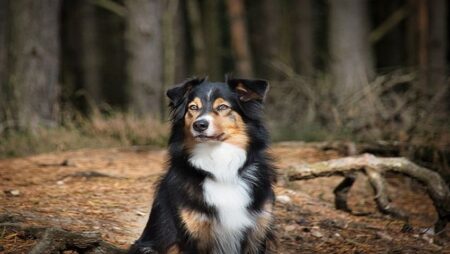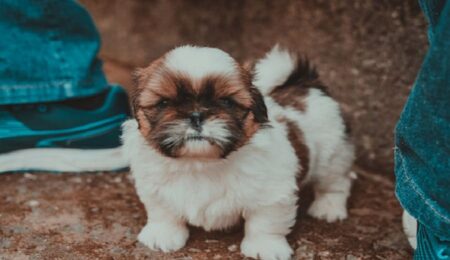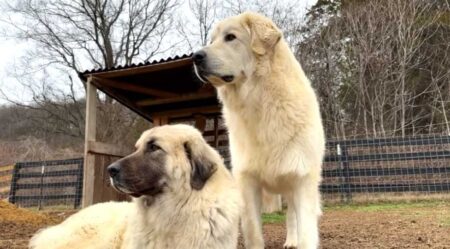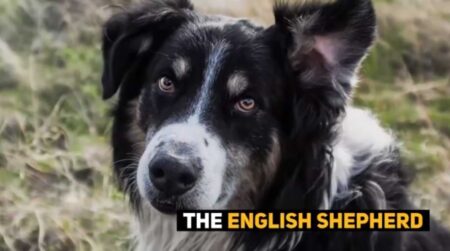Selecting a dog friend involves several factors, including as temperament and size, but coat color is one that is frequently disregarded. The appeal of purebred dogs with uncommon colors has increased significantly in recent years. But there may be moral and health issues hidden beneath their eye-catching hues. Even while these rare-colored purebreds have an obvious aesthetic attraction, potential pet owners should carefully consider the implications of their decision. In this essay, we discuss the rationale behind it being wise to stay away from purebred dogs who have unusual coloring. The pursuit of distinctive coat colors in purebred dogs carries substantial hazards for both the animals, from the persistence of unethical breeding techniques to the occurrence of genetic problems linked to selective breeding.
The Popularity of Rare Coat Colors
Unquestionably attractive, rare coat hues draw dog lovers’ attention from all around the world. Because of their rarity, they are greatly sought after and frequently regarded as special markers of distinction and originality. Breeders prioritize these features because to the demand created by their popularity, which is further fueled by social media and celebrity endorsements. Beneath the surface attraction, there is a darker side to this as the quest for rarity can unintentionally prolong genetic health problems and unethical breeding methods, raising concerns among the dog community.
Genetic Issues Linked to Uncommon Coat Shades
Uncommon coat colors of Dog can, in fact, be related to certain genetic problems. Dog coat color is influenced by a multitude of genetic elements, and rare or unusual coat hues can result from mutations or variances in these genes. Here are few instances:
Melanin Production: Numerous genes regulate the synthesis of melanin, the pigment that determines coat color. Unusual coat colors can result from changes in melanin synthesis caused by mutations in these genes. For instance, changed melanin distribution is the outcome of a mutation in cats that gives rise to the unique coat pattern of the Bengal breed.
Tyrosine Gene Mutations: An enzyme called tyrosine is involved in the synthesis of melanin. Different coat colors can come from changes in melanin synthesis caused by mutations in the tyrosine gene. Such mutations in dogs can result in coat hues like Dalmatian spots or merle in Australian Shepherds.
Agouti Signaling Protein Gene: The overall coat color pattern is influenced by the distribution of pigment in the hair shaft, which is regulated by the agouti signaling protein gene. Variations in coat color patterns, such as the brindle pattern found in some dog breeds including Boxers and Staffordshire Bull Terriers, can result from mutations in this gene.
Dilution Genes: Dilution genes have the ability to lighten an animal’s coat’s basic color. Dilution-causing mutations in the genes can produce coat colors such as blue and Isabella in dogs, or diluted blue or lilac in cats.
Crossbreeding and Hybridization: Crossbreeding, whether deliberate or accidental, can bring novel genetic combinations that result in unusual coat colors between breeds or species. For example, some designer dog breeds have coat colors that aren’t usually found in the parent breeds.
It’s important to note that while some uncommon coat shades may simply be the result of genetic variations, others may be associated with health issues. For example, certain genetic mutations linked to coat color can also be associated with increased risk of health problems, such as deafness or eye abnormalities in dogs with the merle coat pattern. Therefore, responsible breeding practices and genetic testing are crucial to ensure the health and well-being of animals with unique coat colors.
Purebred Dogs with Uncommon Coat Shades
Breeds of dogs with unusually colored coats catch the eye due to their unique colors. These distinctive hue variations distinguish the established breeds from the conventional norms and lend mystery to them. These canine partners stand out from the crowd, whether it’s because of their unusual dilution of color, distinctive merle pattern, or unique brindle coat. Investigating the genetics underlying these unusual hues provides intriguing new perspectives on the complex breeding methods that yield the extraordinary diversity found in purebred dog populations.
Anticipated Traits in Dog Breeds
Anticipated attributes in dog breeds include a broad range of qualities that are meticulously developed through selective breeding. These characteristics include temperament, demeanor, and working ability in addition to physical characteristics like size, coat type, and color. Breed standards specify the desired characteristics for each particular breed, ranging from the gentle disposition of a Labrador Retriever to the devoted and protective temperament of a German Shepherd. In order to preserve and improve these desired traits, responsible breeding methods make sure that every breed keeps its own characteristics and function
Examining Connections Between Coat Color and dog Health
Coat Color: A Window into dog Genetics
A dog’s coat color is an outward representation of its genetic composition, a result of intricate gene interactions that affect both appearance and health results.
Dog Health Considerations in Coat Color Diversity
A thorough analysis of breed-specific genetic predispositions, possible correlations with specific diseases, and the significance of ethical breeding techniques in enhancing canine wellbeing are necessary to comprehend the possible effects of coat color on canine health.
Reasons to Steer Clear of Certain Dog Breeders
Unethical Practices: For some breeders, making money comes above the well-being of their dogs.
Poor Health Standards: Puppies who receive no health tests are more likely to have genetic abnormalities in their parents.
Overbreeding: Dogs from breeders who place more emphasis on quantity than quality frequently suffer from poor health and temperament.
Lack of Transparency: Buyers may encounter unanticipated challenges if pedigrees are fabricated or concealed from view..
Inadequate Socialization: Poorly raised puppies may not receive the right socialization, which could affect their temperament and flexibility.
Frequently Asked Questions
Why should I avoid purebred dogs in rare colors?
Purebred canines with uncommon hues are frequently the product of breeding methods that put appearance above health. Because of the small gene pool, this may result in a number of hereditary health problems..
What health problems are commonly associated with rare-colored purebred dogs?
Because of inbreeding or the existence of recessive genes that can cause genetic illnesses like deafness, blindness, skin problems, and neurological problems, purebred dogs with rare colors may be more susceptible to these conditions.
Do rare-colored purebred dogs have shorter lifespans?
Although lifespans might vary based on breed and personal health, certain purebred dogs with uncommon colors may actually live shorter lives because of the frequency of genetic problems that can impair longevity and general health.
Are rare-colored purebred dogs more expensive to care for?
They certainly can be. These dogs may need more frequent checkups with the veterinarian due to health concerns, specialized care, or procedures to correct genetic problems, all of which can result in increased veterinary expenses.
Are there ethical concerns associated with breeding rare-colored purebred dogs?
It is true that there are serious ethical issues. Breeding primarily for uncommon colors frequently entails techniques like linebreeding and inbreeding, which can result in suffering and poor welfare in the puppies as a result of the higher risk of genetic abnormalities.
Can rare-colored purebred dogs be responsibly bred?
Although it is theoretically feasible, safely producing rare-colored purebred dogs necessitates thorough genetic testing, cautious partner selection to reduce health risks, and putting the dogs’ general health and wellbeing ahead of their color.
Are there alternative options for obtaining a dog with unique coloring?
Yes, there are a lot of choices. Adopting a mixed-breed dog from a shelter or rescue organization may be something you want to think about because they can come in a variety of colors and patterns. Furthermore, occasionally appropriately produced puppies with odd hue are produced by moral breeders that prioritize temperament and health over color.
Conclusion
Purebred dogs with unusual colors may seem appealing, but you should consider the dangers and ethical quandaries associated with breeding them before purchasing one. These dogs are sometimes more susceptible to genetic health issues because to breeding practices such as inbreeding and selective breeding, which emphasize looks over health. The welfare of the pet comes first for a responsible pet owner. This could mean going with a more conventionally colored dog or investigating other possibilities such as adopting from shelters or locating reputable breeders who prioritize moral and healthful breeding practices. Ultimately deciding against buying purebred dogs in unusual colors is a step in promoting dog welfare and discouraging harmful dog breeding practices.







